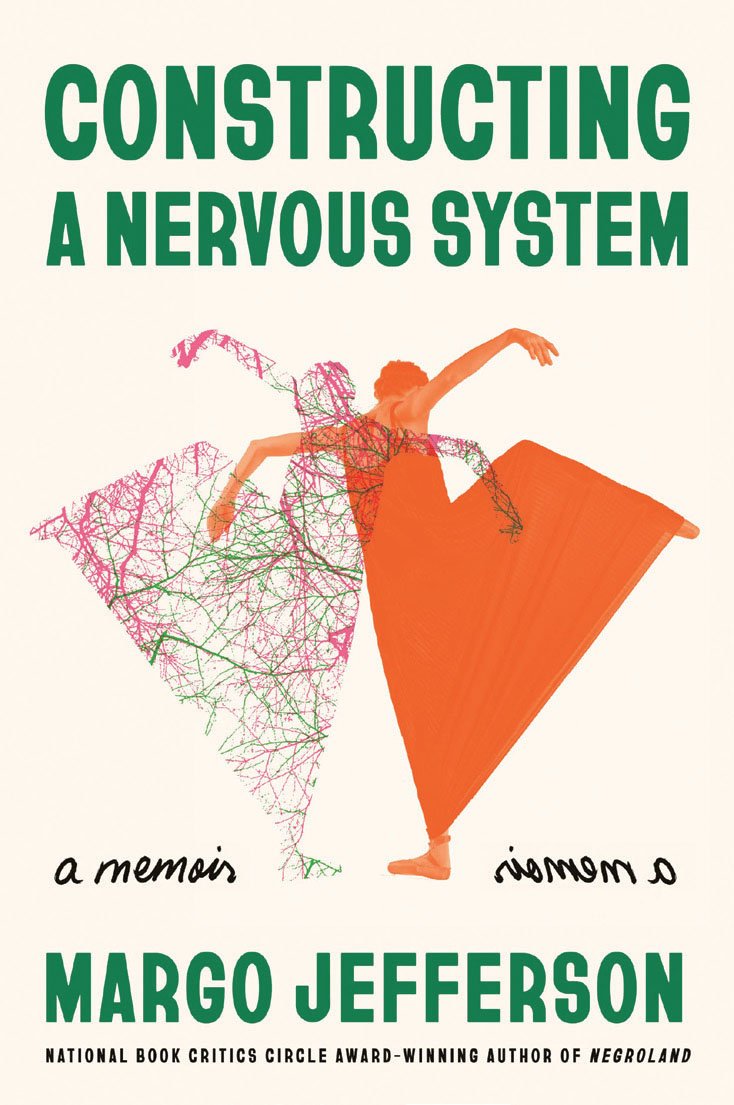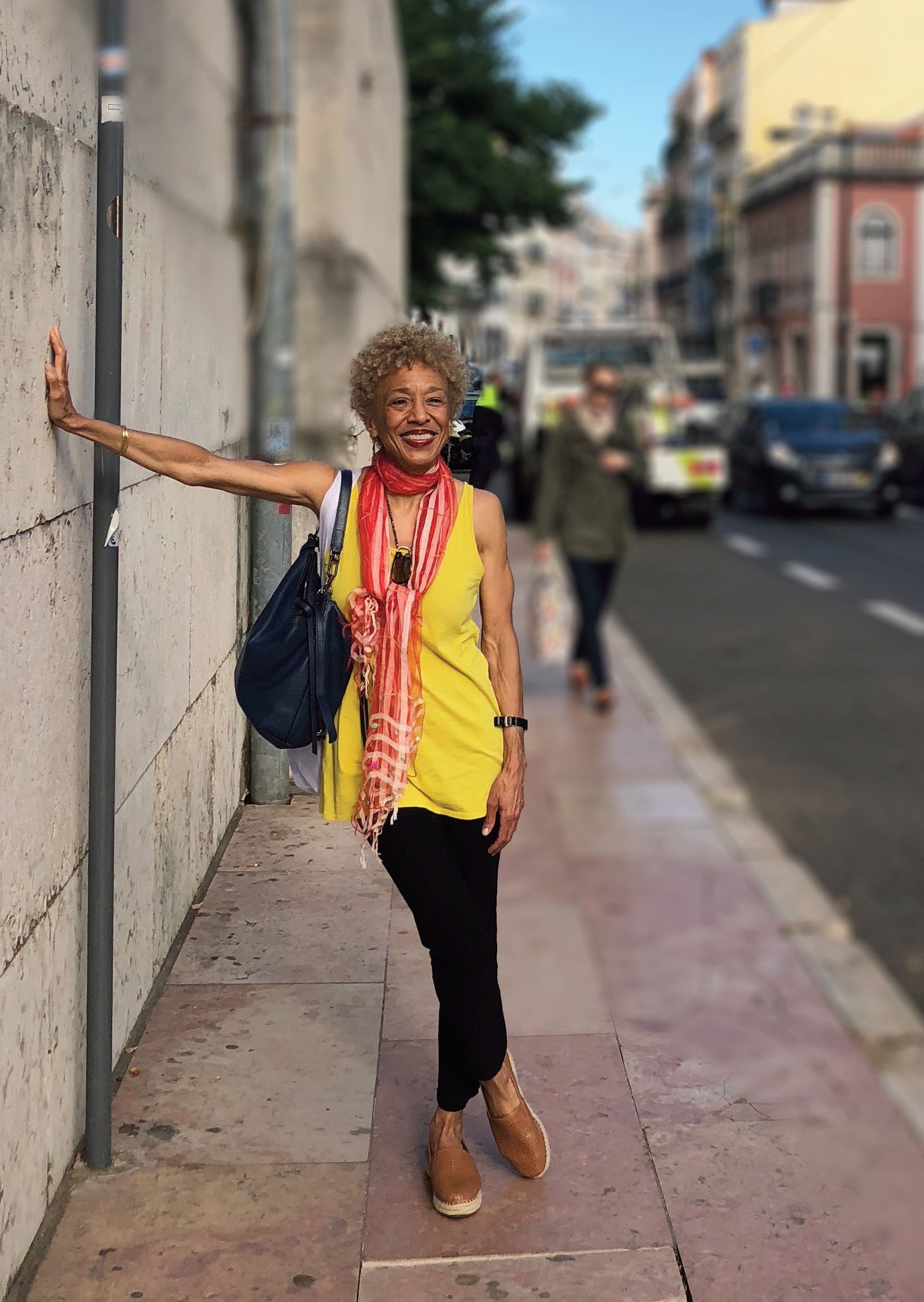
Titling a book can be a tall order —finding the perfect, concise combination of words that announces your aim to an audience and entices them to read it. Margo Jefferson’s latest electrifying work of nonfiction, Constructing a Nervous System, is superbly titled. A nervous system, of course, is the part of an organism that processes stimuli, then sends signals that allow the organism to respond. As an acclaimed critic, Jefferson has spent her life sharing her illuminating responses to an array of literature and art, and this latest book consists, as she says in an interview, of “parts in which the so-called critical material becomes a form of memoir or sparks memoir and sections where the memoir is treated as if we’re talking about material or aesthetic culture.”
In the same interview, she credits her friend and colleague Wendy Walters with giving her the title that she one which also “turned out to also give me a more theatrical, performative form than I had known I was going to use.” Constructing a Nervous System is a bravura performance built of fragments consisting of both autobiography and analysis, voiced and populated by a chorus of influences and inspirations ranging from Gertrude Stein to Emily Dickinson to Jefferson’s deceased mother, Irma, to Josephine Baker to Jefferson’s dead sister, Denise, to Ethel Waters to Ike Turner to Willa Cather and many more.
Of this polyphony, Jefferson writes, “I steal. I gobble. I bask in those moments when I am a fugitive from the confines of my own words. Sometimes I amend the words of others. Always, we converse.” Capturing the gleeful consumption of a lifelong reader and fan, this book is a learned testament to the ways in which other creators can become our own alter egos, permitting us access to experiences and attitudes which we might otherwise be denied.
Jefferson has had a long career as a writer and an academic, working as an associate editor at Newsweek from 1973 to 1978, joining The New York Times as a book reviewer in 1993 and winning the Pulitzer Prize for Criticism in 1995, and teaching at the New School and Columbia University, where she is currently a professor of creative writing. Her 2006 book On Michael Jackson delivered a dazzling and demystifying examination of a superstar whose art was as thrilling as his life was troubling. Her 2015 memoir Negroland explored her experience growing up within Chicago’s Black bourgeoisie prior to the civil rights era, as well as a career that extended—and continues to extend—into the ongoing racial tensions and reckonings of the present day.
Here, Jefferson creates what she calls a “temperamental autobiography” and looks critically at the nature of these very achievements and their “touches of self-protective grandeur,” writing, “Stand up especially straight, please, you are one of the first black/woman critics here, you are among the first of your race and gender to steadily publish reviews in a cluster of widely read periodicals from the 1970s into the twenty-first century.” Page after page, she delineates the challenge, faced by herself and innumerable others, of nonwhite, non-male artists “to achieve; succeed as a symbol, and a self.”
As she does so, she wonders widely and deeply about “what happens when you’re a viewer, spectator, reader who craves imaginative adventure and has no—I don’t want to say models, I’ll say avatars—to conduct identity experiments with and on?” adding that “negative capability won’t suffice—too much of white art requires a negative capability that negates whole parts of one’s self.”

One of the many beauties of Jefferson’s writing is that when she asks such questions, she really seems to be working out the answer on the page with few preconceived notions, surprising herself as she writes her way toward various truths. This feat affords the reader the rare treat of witnessing someone thinking in real time, making discoveries as she goes. Early on, exploring her self-described idolization of Black men, she muses that part of her fascination resides in the fact that “I wanted to play in private with styles and personae deemed beyond my range. Beyond the laws, rituals, and behaviors I’d been taught to live by.” Billy Eckstine, Marvin Gaye, Bud Powell, Sly Stone, and Nat King Cole, to name a few, give her the space to access powers she felt deprived of by her achievement-oriented upbringing, with its focus on being both exceptional and respectable.
In keeping with the performative approach suggested by her title, Jefferson responds to her own questions in part by surveying and, in a sense, inhabiting various avatars, constructing their stories as a way of constructing and reconstructing her own.
Her kaleidoscopic gaze shakes and reconfigures everything it looks at, finding new facets of old stories, even those of figures that might seem so familiar as to defy being seen in any kind of new light. In the section on Ella Fitzgerald, for instance, she delivers a tour-de-force close reading of “A-Tisket-A-Tasket,” celebrating an artist’s astonishing act of self-creation, in which an orphan who was incarcerated in the New York State Training School for Girls wills herself into becoming “a star who will live and flourish for fifty-eight more years, securing her reign as the First Lady of Song and the First Lady of Jazz,” albeit one who “will offer no pained or ruefully tranquil admissions, no touchingly unguarded confessions” and one who “will refuse our scrutiny and our pity.”
Each episode in which she brings a particular cultural artifact under her inspection feels like a snow globe that Jefferson builds and then upends, rearranging the particles, letting us look anew on something we may have believed we’d already seen and giving us the opportunity to understand that person, place, or thing in a newly energized way. Writing of Uncle Tom’s Cabin, she zeroes in on her obsession with Topsy, walking the reader through the character’s significance as an angry outsider before concluding, “Harriet Beecher Stowe’s Topsy became a Christian missionary in Africa. Kara Walker’s Topsy knew better. When American horror has invented you, you stand your ground and invent it right back.”
The cumulative effect gives the impression of a one-woman show where Jefferson stands in a spotlight onstage, then delivers rangy monologues about other formidable figures who also stood onstage, like Sammy Davis Jr., who she juxtaposes with James Baldwin. So, too, does
she boldly recombine figures whose words on the page are rarely considered side-by-side as she does with W. E. B. Du Bois and George Eliot, aka Mary Ann Evans, in whose respective The Souls of Black Folk and The Lifted Veil Jefferson finds stirring and unexpected resonances. Like a set designer constructing a tableau, she ends that meditation with an arresting image: “They would have made a striking couple, I think—could he have borne a woman of equal talents and could she have borne a man of alien hue and cast.”
The highest compliment I can give this extraordinary book is that Jefferson writes like a remarkable teacher—a mentor who wants to show her students things, yes, but also to light a fire in them to see things for themselves, to revel without end in connections and contexts. “When I teach, I like to display, even flaunt, the contours of my sensibility: teacher, thinker, reader, writer,” she writes in a section examining the conflicts and contradictions of teaching Willa Cather to her mostly white students. Constructing a Nervous System is an audacious and exhilarating flaunt of a book—defiant and ostentatious, a spectacular reminder that there’s no such thing as looking too closely or thinking too hard.

